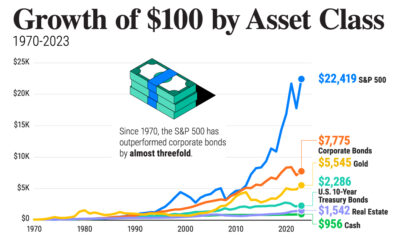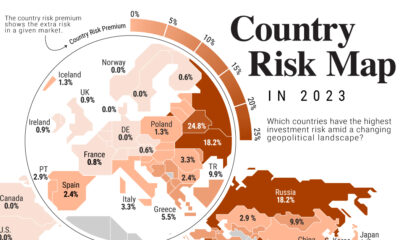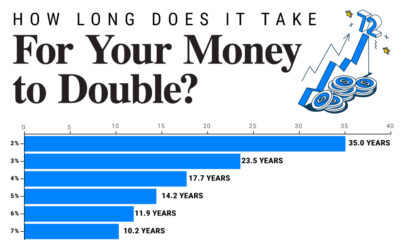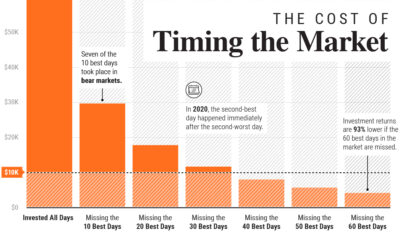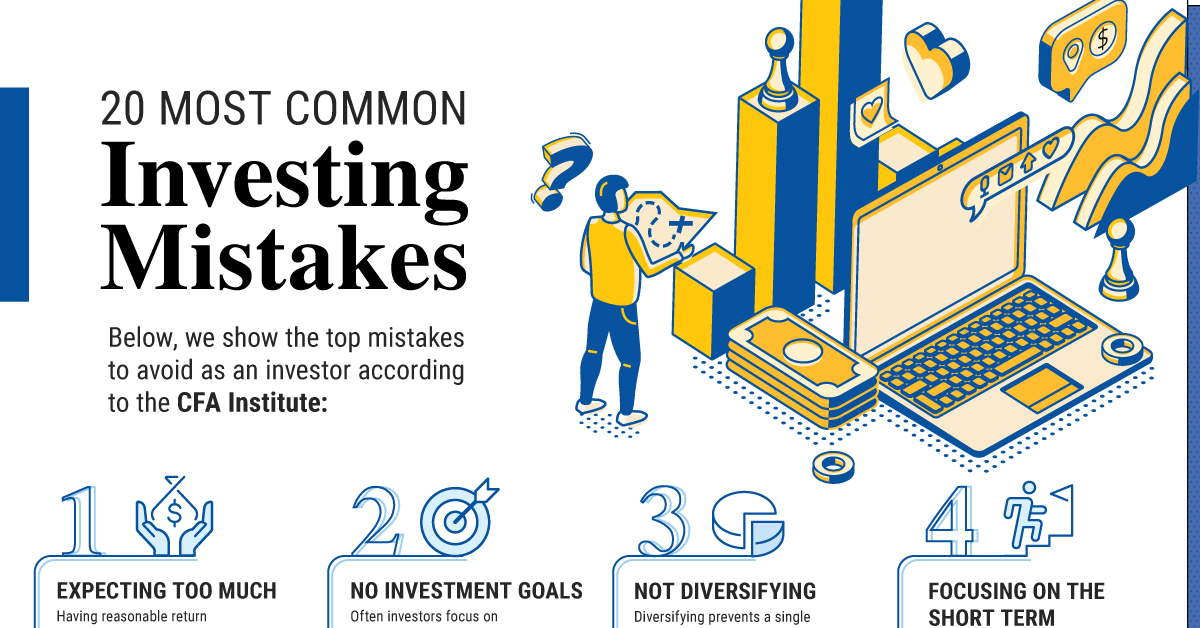This infographic is available as a poster.
The Top Investment Quotes Every Investor Should Know
Quotes can have lasting impressions. They can also tell a story.
From Warren Buffett to John Maynard Keynes, the financial greats offer insights that often last for decades. Not only have they lived through several market cycles, their understanding of the market is foundational to their success.
In this infographic from New York Life Investments, we distill five timeless investment quotes and explore the data behind their insight.
Top 5 Investment Quotes for Investors
What investment quotes can we learn from today?
1. “The most important quality for an investor is temperament, not intellect.”
— Warren Buffett, CEO of Berkshire Hathaway
Often, emotions influence trading activity. Consider how investors traded 10x more in the first quarter of 2020 than in 2009.
Here are three fear indicators that can lead to these trading spikes:
- Volatility: Higher Cboe Volatility Index (VIX) reading indicates higher fear.
- Stock Price Strength: A greater number of stocks reaching 52-week lows versus 52-week highs indicates higher fear.
- Bond vs. Stock Performance: When bonds outperform, it can indicate higher fear.
Yet, in spite of extreme investor fear, the S&P 500 has proven resilient. The index had positive performance in 32 of the last 42 years.
2. “The individual investor should act consistently as an investor and not as a speculator.”
— Benjamin Graham, author of The Intelligent Investor
Benjamin Graham, the father of value investing, had an enormous influence on Warren Buffett. One of his many core insights includes recognizing the difference between an investor and a speculator:
- Investor: Focused on safety of principal and reasonable return.
- Speculator: At risk of losing potentially the entire principal.
Rather than seeing an investment as simply a ticker symbol, Graham says, think of an investment like having a partial ownership in a business.
When investors think like an owner, they look for the intrinsic value of the company in the long term, which can compound in value over time.
| Time | Monthly Contribution | Annual Return | Interest Earned on Investments |
| Year 1 | $200 | 7% | $14 |
| Year 11 | $200 | 7% | $231 |
In a relatively short period of time, the investor is earning
$231 on a $200 monthly contribution.
3. “The biggest risk of all is not taking one.”
— Mellody Hobson, co-CEO of Ariel Investments
Mellody Hobson, co-CEO of Chicago-based Ariel Investments, became president at just 31. Today, Ariel manages over $18 billion in assets. As the head of two major firms (she is also chairwoman of Starbucks), Hobson understood the importance of taking the first step.
We show an example of a potential benefit of starting early:
| Investor | Contribution Timeline | Monthly Contribution | Annual Rate of Return | Total Contribution Amount | End Portfolio Value |
| Investor A | Age 25-35 | $200 | 7% | $24,000 | ~$300,000 |
| Investor B | Age 35-65 | $200 | 7% | $72,000 | $245,000 |
As the above table shows, Investor A contributed just $24,000, outperforming Investor B—who contributed 3x more ($72,000) over their lifetime. By age 65, Investor A’s portfolio value was worth nearly $300,000 while Investor B’s stood at $245,000.
Investing early is especially timely given today’s inflationary environment. Over time, inflation erodes the value of the dollar and, in turn, a person’s overall wealth.
4. “Time in the market beats timing the market.”
— Ken Fisher, founder of Fisher Investments
If an investor tried to time the market and missed the best performing days over the last century, they would have earned just a fraction of the total returns. Staying invested led to over 17,000% returns, yet missing the 10 best days over each decade led to returns of just 28%:
| Decade | S&P 500 Price Return | Excluding Best 10 Days Per Decade |
| 1930-2020 | 17,715% | 28% |
| 2020 | 18% | -33% |
| 2010 | 190% | 95% |
| 2000 | -24% | -62% |
| 1990 | 316% | 186% |
| 1980 | 227% | 108% |
| 1970 | 17% | -20% |
| 1960 | 54% | 14% |
| 1950 | 257% | 167% |
| 1940 | 35% | -14% |
| 1930 | -42% | -79% |
Source: Bank of America, S&P 500 returns (Mar 2021)
Historically, the biggest drops in the market often happen just before the largest upswings, meaning that opportunities can be easily missed.
Even the top investors have trouble timing the market at every turn.
5. “It is better to be roughly right than precisely wrong.”
— John Maynard Keynes, father of modern macroeconomics
When markets are volatile, diversification can help investors temper its effects. Consider the following example that shows the advantages of diversification.
| Annual Total Returns 1950-2020 | Large Cap Equity | Bonds | 50/50 Portfolio |
| 1-Year Rolling Low | -39% | -8% | -15% |
| 1-Year Rolling High | 47% | 43% | 33% |
Source: Bloomberg Finance L.P., FactSet, J.P. Morgan Asset Management; Robert Shiller, Strategas/Ibbotson, US Federal Reserve (2021)
When investors blended stocks and bonds in their portfolios over a one year period, the downside was sharply reduced.
| Annual Total Returns 1950-2020 | Large Cap Equity | Bonds | 50/50 Portfolio |
| 5-Year Rolling Low | -3% | -2% | 1% |
| 5-Year Rolling High | 28% | 23% | 21% |
Source: Bloomberg Finance L.P., FactSet, J.P. Morgan Asset Management; Robert Shiller, Strategas/Ibbotson, US Federal Reserve (2021)
Meanwhile, over the last seven decades, a combination of stocks and bonds has never produced a negative return across a five-year rolling period.
Learning from Historical Insight
The above five investment quotes can arm investors with investing lessons that often are easy to forget:
- React logically, not emotionally
- Leverage compound interest
- Start early
- Stay invested
- Diversify
With insights drawn from those who have shaped the financial world, investors can better position their portfolios for success.


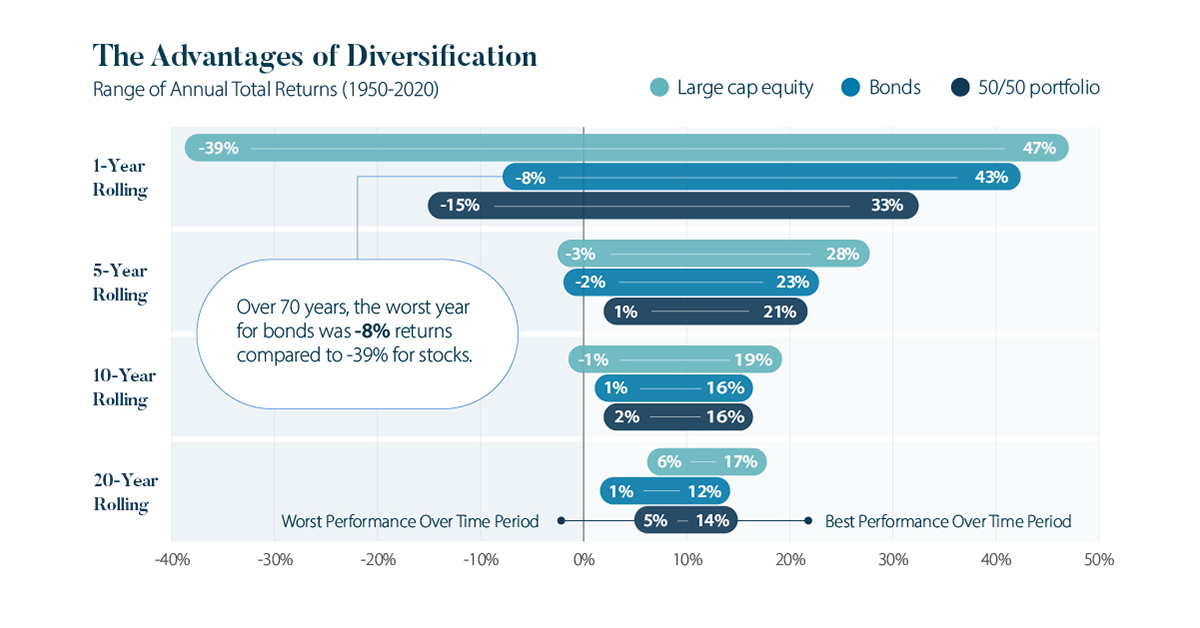

 Markets in a Minute2 years ago
Markets in a Minute2 years ago
 Markets in a Minute2 years ago
Markets in a Minute2 years ago
 Infographics2 years ago
Infographics2 years ago
 Markets in a Minute1 year ago
Markets in a Minute1 year ago
 Infographics3 years ago
Infographics3 years ago
 Markets in a Minute2 years ago
Markets in a Minute2 years ago
 Infographics1 year ago
Infographics1 year ago
 Markets in a Minute2 years ago
Markets in a Minute2 years ago

